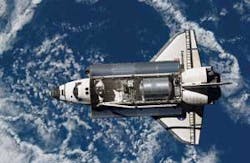Specialists at Neptec–a designer, developer, and integrator of mission-critical, real-time software, harsh environment electronics, and digital signal processing (DSP) for space, aerospace, defense, and security applications–required a software testing tool for the company’s Laser Camera System (LCS). They found the needed solution at LDRA Technology Inc. in San Bruno, Calif.
The LCS is a wide-angle, fast, and precise laser scanner installed on the extension boom of the Canadarm robotic arm on the U.S. space shuttle. The scanner is able to inspect hard-to-reach areas on the underside of the shuttle that are normally invisible from inside the vehicle. The extension was used on the Canadian-built orbiter boom sensor system, which made its maiden flight on Return to Flight mission STS-114.
Neptec engineers, frustrated with time-consuming unit test tools with a steep learning curve, sought an easy-to-use tool to work in the company’s environment and software-development process. The solution needed to test C/C++ on a Windows XP platform using both QNX and Windows as the operating system. The software needed to compile with MSVC 6.0, as well as Code Composer V3.1 for DSP testing.
“LDRA met and exceeded all our requirements for the Laser Camera System on the Return to Flight program,” says John Schneider, Neptec’s director of engineering.
“The ability to easily view the reporting facilities was vitally important to us,” Schneider says. “From the team’s perspective, it was important to be able to maintain tests and to archive data in a way which was easily accessible. The functionality within the LDRA tool suite enabled this information to be easily available. The ability to carry out full path coverage assisted the team to test the critical segments of the code. The team has been able to increase the throughput of unit testing, and as a result the Laser Camera System was delivered on time.”
For more information, visit LDRA Technology Inc. online at www.ldra.com.

